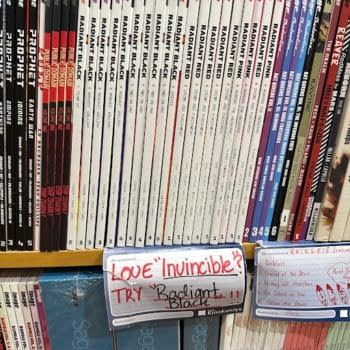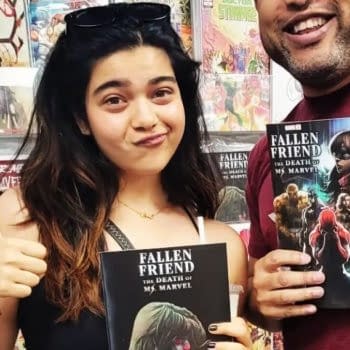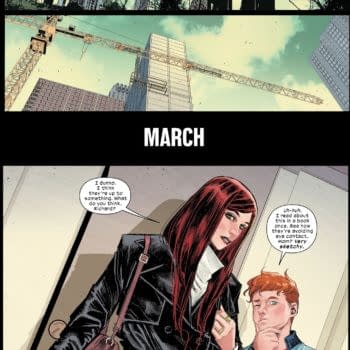Posted in: Comics | Tagged:
Why Does Thor In Avengers #9 Obsess Over The Duckworth-Lewis Method?
Avengers #9 by Mark Waid, Mike del Mundo and Marco D'Alfonso is a very engaging story about Thor, sent to another dimension, when opposing Hydra and Secret Empire, without her hammer. Funny, moving, easy on the eye and a sweet Bill-Mantlo-esque moment of a comic book. That has little or nothing to actually do with Secret Empire, save for some limited initial setup.
But we do get to share some of Thor's secret obsessions as time is spent in the company of a new friend. And who knew that Jane Foster was such a fan of the world's second most popular sport, cricket?
For those who don't know, the Duckworth-Lewis method is named after two statisticians Frank Duckworth and Tony Lewis who, in 1992 as a result of the outcome to the semi-final in the 1992 Cricket World Cup between England and South Africa, created a new mathematical formula to calculate the target score for the team batting second in a limited overs cricket match interrupted by weather. It is generally accepted to be the most accurate method of setting a target score.
The basic principle is that each team in a limited-overs match has two resources available with which to score runs: wickets remaining, and overs to play. Where overs are lost due to poor weather, setting an adjusted target for the team batting second is not as simple as reducing the run target proportionally to the loss in overs, because a team with ten wickets in hand and 25 overs to bat can be expected to play more aggressively than if they had ten wickets and a full 50 overs, for example, and can consequently achieve a higher run rate. The Duckworth–Lewis method is an attempt to set a statistically fair target for the second team's innings, based on the score achieved by the first team, taking their wickets lost and overs played into account.
In the 1992 match, rain stopped play for 12 minutes with South Africa needing 22 runs from 13 balls chasing England's 252 runs for 6 off 45 overs. The revised target left South Africa needing 21 runs from one ball, which was a reduction of only one run compared to a reduction of two overs, and considered an impossible target given that the maximum score from one ball is generally six runs.
The Duckworth-Lewis method avoids this and in this match, would have left South Africa four to tie or five to win from the final ball.
So there. And just the kind of sporting statistic a weather god might just well obsess about.













